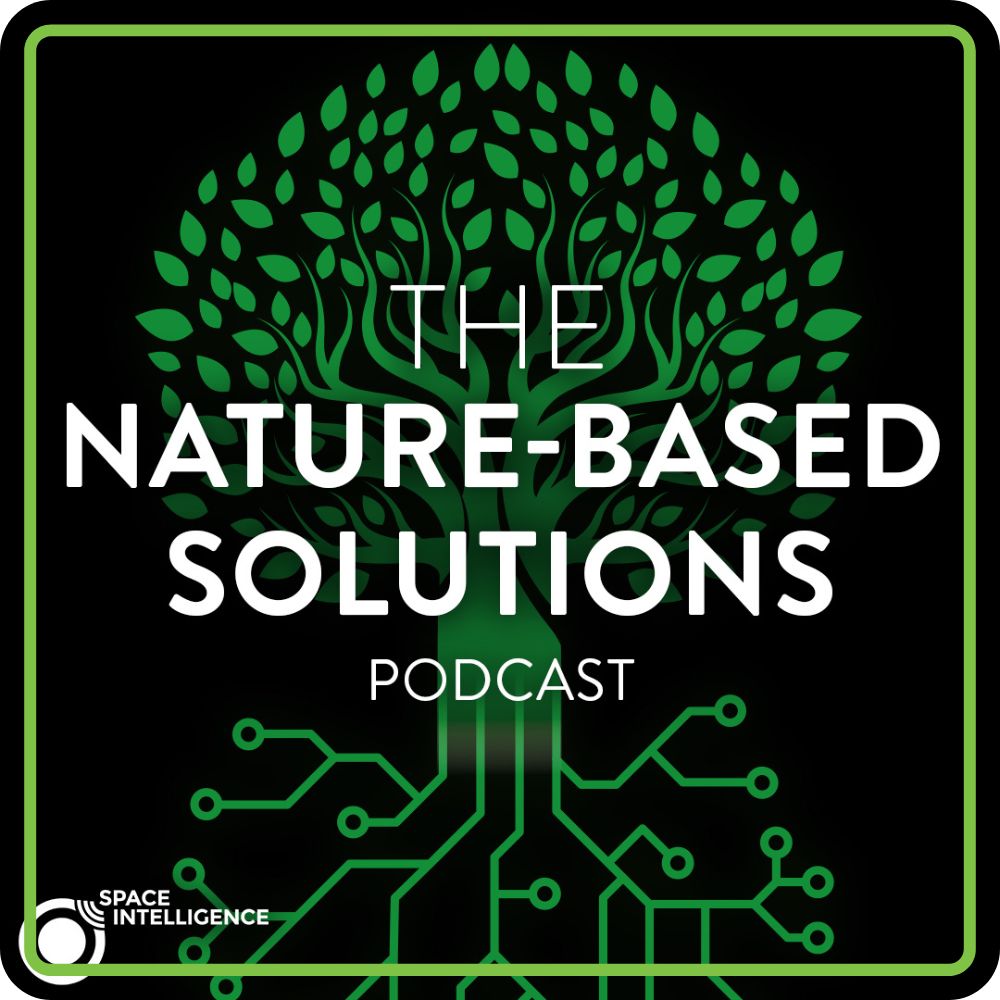
How LiDAR, Radar, and Remote Sensing Transform Above-Ground Biomass Mapping: Insights from Space Intelligence Scientists
The team of scientists at Space Intelligence are always at the cutting edge of technology, creating highly-detailed maps of above-ground biomass for use by a range of clients.
On this week’s episode of The Nature-Based Solutions podcast, three of the PhD-level scientists explain what they’re working on and describe the combination of technology and on-the-ground experience they rely on.
Read a summary of the conversation or listen to the full podcast below.
Click here to listen to the podcast on Spotify.
Mapping Land Cover and Biomass
Paula Nieto – Head of Mapping and Carbon Science – PhD in remote sensing and measuring biomass.
“We can map either the land cover of an area or the biomass of an area and both can be used by our clients, to measure what is there in the moment and, when they establish a project, what had happened before.
So we can monitor change both in land cover and in carbon. What remote sensing enables us to do is see the whole project and the whole landscape, monitor what is happening there, and then we can share this data.
“Forests are incredible sources of carbon but they are also important for biodiversity, they are important for lots of local communities, there are many indigenous communities that live with the resources of the forest. They are also important for our future, lots of medicines and things we have not even discovered are in the biodiversity of the forest.
I spent a few months in the Republic of Congo, I did my PhD there. In one of my fields, there were some gorillas, so I had an encounter with a baby gorilla, for example, as well as different types of poisonous snakes.”
LiDAR, Radar, and the Beauty of Forest 3D Scanning
Harry Carstairs – research Engineer – PhD in remote sensing of forest degradation
“LiDAR is a little bit like sonar except it uses light instead of sound, it makes a pulse of light using a laser. It sends that off in a direction and when it reflects off an object, it comes back to the sensor, and it’s measured. This happens millions and millions of times per second and by measuring all of these reflections, the LiDAR builds up a sort of 3D reconstruction of the forest. You can do this in a couple of different ways; you could do it on a tripod on the ground, this is the cutting edge way of measuring the shape of trees. It means that instead of putting a tape measure around the diameter of a tree, you’re actually getting a measurement of the form all the way up, including every branch and even the twigs. That way, you can build a sort of 3D model of a tree and see exactly how much wood is contained in there. With some information about the species, you can look up the density of the wood, and multiplying the density by the volume will give you the mass. That’s how you can link those measurements to the carbon stored in a forest.
It takes a while to do this ground-based laser scanning, you might spend three days just getting one football pitch-sized forest. So we need a kind of stepping stone between that and space-borne sensor satellite images that cover hundreds and hundreds of kilometres. One option is to use drone LiDAR or LiDAR attached to planes.
We also use optical sensors, which are a little bit like cameras, they wait for light from the sun to reflect off the earth and come back. And so that’s a bit like what you’re used to seeing on a Google map. Another technology that’s used a lot in Space Intelligence is radar. This is a little bit like LiDAR in that it creates its own pulse of light and sends it to the earth and waits for the reflections to come back, except that it uses microwave wavelengths.
I think quite a lot of us at Space Intelligence have a bit of a personal connection to the tropical forests, and that we’re working on. I actually lived with an indigenous community in Guyana for a year, and the longer I stayed there, the more the forest felt like home. I think that perhaps had some influence when I ended up choosing a PhD in tropical forest remote sensing.
It showed me a completely different way of living, relying on the forest. I saw how they adapted their fishing through the seasons, depending on when the forest was flooded, or the water was low, how they knew exactly what every different tree was useful, whether it was building houses or digging, making a dugout canoe, I was really pleased when I asked someone if they can make us a dugout canoe, and they went up into the hill and found just the right tree. And that was my car, as it were, for the next few months to get around.”
Baseline Mapping for Tanzania
Thom Brade Senior Mapping Scientist – PhD in tropical woodland ecology
“I’m working on a map of Tanzania, setting the baseline for the country. It’s a habitat map, so a land cover map, using various types of remote sensing: active and passive remote sensing, and a series of kind of manually collected polygons, where our internal analysts determine what the land cover class is and make a sample to train a model based on the remote sensing data.
During my PhD I was mostly working in Mozambique and Tanzania. Elephants are always interesting to come across, but also snakes and things like that. I guess the things you remember the most are learning from the communities, seeing the diversity of different uses of the forest, but also the kind of cultural and social benefits they derive from the forest environment.”

